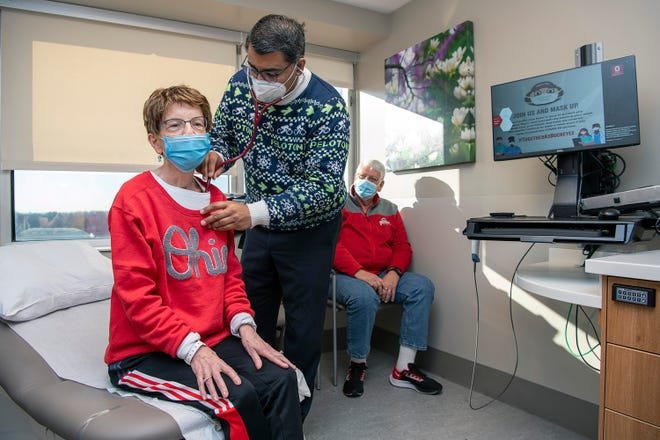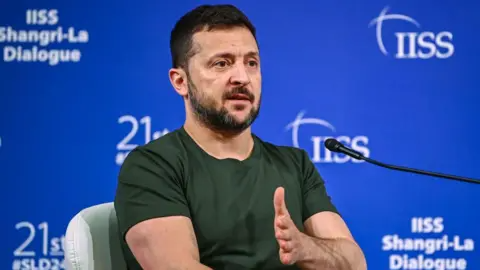In fall 2016, Pam Matthews began experiencing a lingering, unusual pain when she crossed her legs or slept on her stomach. An ultrasound revealed a surprising diagnosis: uterine cancer. It is the most common cancer of the female reproductive organs, diagnosed in more than 66,000 women annually.
Unlike many of the most common forms of cancer — which are on the decline thanks to early detection — rates of uterine cancer are rising. Because it typically occurs in women over 65, it can often be missed in its earliest stages, because symptoms can mimic those of menopause.
Pam was referred to a gynecologic oncologist in Cincinnati for a hysterectomy followed by chemotherapy and radiation. The treatment kept the cancer from advancing for about six months before she developed a secondary cancer in her lungs that required surgery.
Despite trying numerous treatment options — including an experimental trial in Cincinnati, the cancer just kept coming back.
Frustrated and seeking alternative treatment options, Pam’s Cincinnati oncologist, Paula Weisenberger, MD, referred her to The Ohio State University Comprehensive Cancer Center – James Cancer Hospital and Solove Research Institute (OSUCCC – James) for a trial led by gynecologic oncologist David O’Malley, MD. She joined a new trial — but the cancer persisted. Then in April 2020 she met Sameek Roychowdhury, MD, PhD, and learned about a precision cancer medicine clinical trial that would give her access to a new oral drug therapy that targeted her specific tumor mutation.
Precision cancer medicine refers to a new standard of care based on genomic drivers of cancer. By understanding the specific molecular characteristics and drivers of a person’s unique cancer, scientists can better match drug therapies likely to stop the cancer’s growth.
“Treatment had left me so weak physicially and mentally frustrated. My husband and I jumped for joy when we learned we had another option. It gave us hope, and to date it has been the only treatment that has consistently kept my cancer from spreading. I am so thankful,” says Pam.
Starting therapy amid a viral pandemic, Pam was relieved to learn that she could manage much of her clinical trial therapy via telehealth, receiving her medication in the mail, doing her bloodwork in Cincinnati and following up with Dr. Roychowdhury via virtual video visits.
“When you have to travel to get the best cancer therapy for your cancer, any time savings is so helpful. Being able to do much of my follow-up testing from a location closer to home gave me more time to spend with my family and made the entire process less stressful,” Pam says. “I came to enjoy my visits to the OSUCCC – James, though, because Dr. Roychowdhury and his entire team became a second family to me.”
Now age 72, and 19 months out from her initial clinical trial treatment, Pam has stable tumors, and no additional tumors have developed. She spends much of her free time with her extended family, including her husband, son, daughter-in-law, three grandchildren, two step-grandchildren and two great-grandchildren, the youngest of whom is just a few months old.
The research trial Pam is participating in came about through a discovery made by Dr. Roychowdhury’s research team through his team’s research autopsy study funded by Pelotonia, which showed that FGFR gene mutations were present in numerous forms of solid cancerous tumors, including ovarian.
A new approach to clinical trials
Typically, clinical trials are conducted by disease site origin — so researchers design trials looking at patients with cancers that occur in the same part of the body — for example, primary breast or lung cancer. Dr. Roychowdhury’s team flips this model and uses a “basket” approach that studies potential treatment options based on specific genetic characteristics of the tumor versus disease site.
Genetic mutations are changes in the genetic material (DNA) of a cell. FGFR proteins are involved in cell division, cell maturation and formation of new blood vessels, wound healing and bone growth, development and maintenance.
“When these cells are mutated, it can cause the FGFR protein to become overactive in diseases like cancer,” explains Dr. Roychowdhury.
Pam qualified for an Ohio State-led phase II clinical trial in which Dr. Roychowdhury’s team is testing how well the drug Ingratinib works in treating solid tumors that have spread to other places in the body. All patients in the study have FGFR gene mutations, such as FGFR1-3 gene fusions or other alternations of the FGFR gene, but their cancers manifest in different parts of the body — for example, the liver or lungs. The drug ingratinib may stop the growth of these tumor cells by blocking FGFR proteins in these tumors.
“This way of looking at cancer reveals potential treatment options based on specific molecular features of a cancer versus disease site. This is a radically different way to target therapy that has the power to produce more effective treatment results for our patients,” Dr. Roychowdhury says.



































